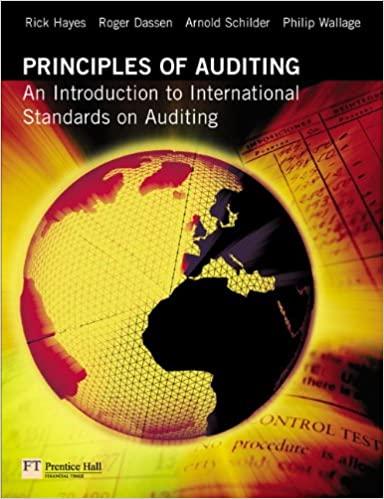Name: Student Number: Cash The Gerbera Flower Shop, owned by P. Pauls, sells plants. The shop has an October 31. 2020 fiscal year end, uses a perpetual inventory system. On October 1/2020, the company's trial balance reported the following: $21,385 P. Pauls, capital $58,400 Merchandise inventory 64,125 P. Pauls, drawings $2,800 Supplies 3,750 Sales 474,080 Sales Returns and Allowances 42,800 Rent revenue 1.200 Sales discounts 13,800 Cost of goods sold 301,010 Land 180,000 Advertising expense 2.270 Vehicle 70,800 Salaries expense 68,200 Accumulated depreciation-vehicle 13.275 Rent expense 18.150 Accounts payable 12.650 Insurance expense 4,140 Interest Payable 6,070 Interest expense 1.925 Unearned revenue 4,680 Accounts Receivable 20,000 Notes payable-Due Dec. 2022 42,000 Mortgage Payable-Due 2025 200,000 Transaction for the Month During the last month of the fiscal year, the company had the following transactions: 1. Owner withdrew $4,800 cash 2. Purchased supplies on account for $345. 3. Hired a new employee to be paid $1.600 per week. 4. Collected $3,000 of the accounts receivable 5. Paid for the supplies purchased on account. 6. Received $525 cash in advance from customers for merchandise to be delivered next month. Adjustment and additional data: 1. A count of supplies on October 31 shows $1475 on hand. 2. The Vehicle has an estimated 15-year useful life. 3. or the mortgage payable, 560,000 must be paid on September 30 each year 4. An analysis of the Uneamed Revenue account shows that 30% has been camed by October 31 5. On October 31, services of $25,000 were provided but not recorded. 6. The mortgage payable has a 2.5% interest rate. Interest is paid on the first day of each month for the previous month's interest 7. Employees earned 5950 per day. On October 31,7 employees were unpaid for 4 days. 8. A 12-month insurance policy was purchase February 1, 2020 for $1,800 9. The telephone bill for the month was for $550, and at the end of the month it was not recorded or paid. Instructions (a) Using the T-Accounts provided below enter the opening balances for each account. Note-not all T Accounts needed may be created and blank T- Accounts are provided if accounts need to be created. (6) Journalize the transactions for the month. Post the transactions and update the balances in the T-accounts. (c) Prepare an unadjusted trial balance at year end. (d) Record the adjustments required at the year end. Post the adjusting entries in the T Accounts created and update the account balances as required (e) Prepare an adjusted trial balance at year end. () Prepare a multiple step income statement, statement of owner's equity, and classified balance sheet. Answer the following Questions 1. When should adjusting entries be recorded? 2. Why does the accounting cycle include trial balances 3. Calculate the gross profit margin and the current ratio for your business? T Accounts for Answers A-BD Cash T Accounts for Answers A-BD Cash Accounts Receivable Prepaid Insurance Supplies Merchandise Inventory Accumulated Depreciation Accounts Payable Unearned Revenue Notes Payable Interest Payable Mortgage Payable Owners Capital Owners Drawings Sales Rent Revenue Sales Returns and Allowances Sales Discounts Cost of Goods Sold Salaries Expense Rent Expense Part B: Journal Entries: Part C- Unadjusted Trial Balance Part D-Adjusting Entries Financial Statements: Responses: 1. When are adjusting entries needed? 2. Why does the accounting cycle include trial balances? What do trial balances prove? 3. What is the Current ratio and Gross Profit Margin for the business



















